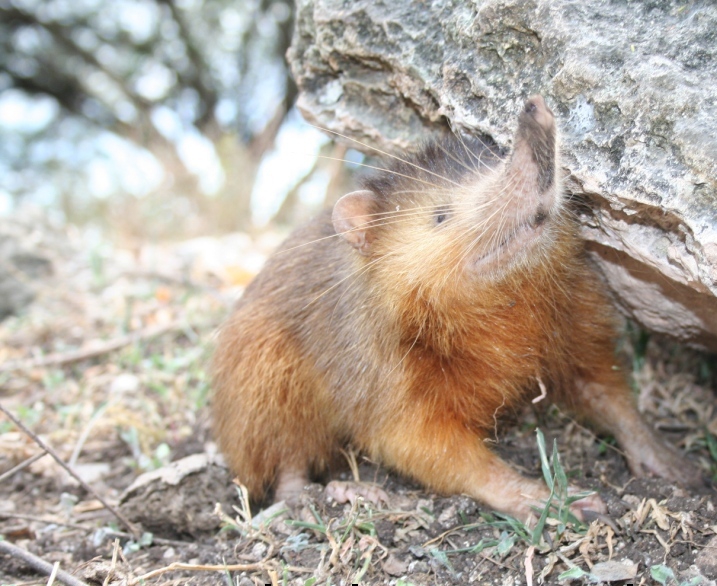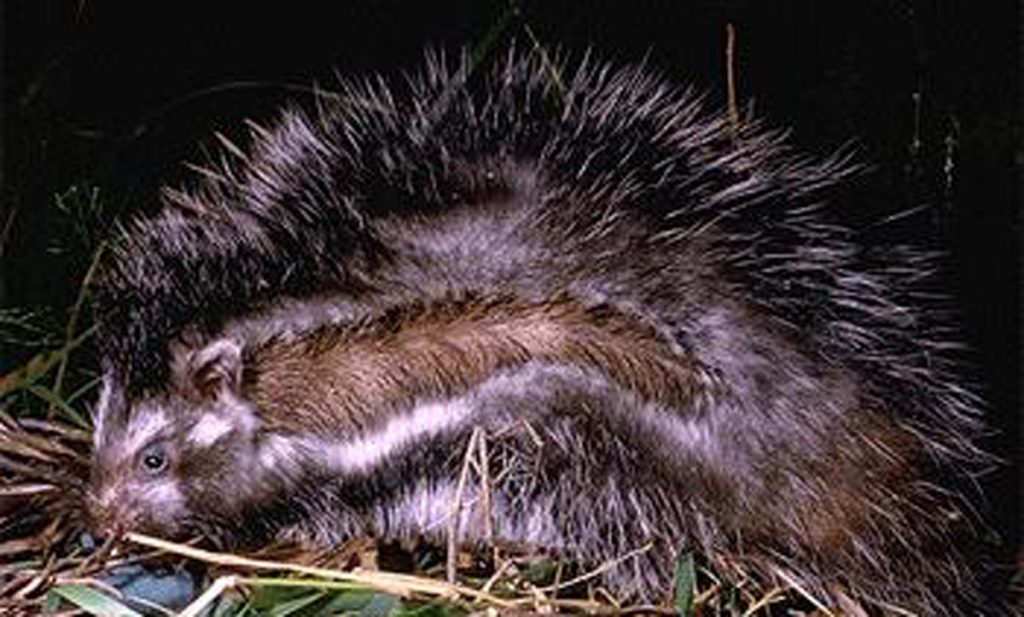When most of us think of venomous animals, we probably picture cold-blooded creatures — reptiles like vipers or cobras, deadly spiders, or maybe a tropical fish festooned with stinging spines. But there are a select few venomous mammals that also deserve recognition for their chemical weaponry.
Some more famous examples include the male platypus — with its excruciating, venom-injecting ankle spurs — and some species of shrew — tiny, insect-eating mammals with a paralytic toxin in their saliva. However, there are other venomous representatives among fuzzy, warm-blooded creatures that are less familiar, and somewhat unexpected.
Solenodon

The solenodon looks like someone took a disheveled shrew and blew it up to the size of a large rat. Indeed, these animals make up a family (Solenodontidae) that rests in the same order that includes “insectivores” like moles, shrews, and hedgehogs. The nocturnal animals are incredibly old, having split off from their smaller, and cuter, relatives shortly before the dinosaurs went extinct. Today, only two species remain in the Caribbean, both highly-endangered and found in Cuba and Hispaniola.
Weighing up to a pound or two, solenodons are big enough to eat small vertebrates like frogs or lizards, but they mainly eat things like insects and earthworms, which they hunt by snuffling along the leaf litter with their sensitive, tapered snouts.
Their venom is similar to that of their shrew relatives, originating in an enlarged salivary gland in their lower jaw, and seeping up through deep grooves in their incisors. The venom seems to have acute neurological effects, like that of a sea snake or a coral snake, causing paralysis and labored breathing in small animals. It’s unknown if the venom evolved for subduing prey, or if it’s used in competition between solenodons.
Vampire Bat

Yes, vampire bats are technically venomous. Broadly speaking, venomous animals are defined by their ability to introduce a toxin with marked physiological impacts — produced in a gland — into the body of another creature by wounding it with a specialized body part for delivering that toxin. Vampire bats very arguably meet that definition.
The bats make up a distinct subfamily (Desmodontinae) of New World leaf-nosed bats that have evolved to drink blood stolen from other vertebrates. There are three species, but the most regularly encountered and most strongly adapted to blood-feeding is the common vampire bat (Desmodus rotundus), native to Central and South America.
These crafty parasites glean blood from large, often sleeping mammals using a set of scalpel-sharp teeth to make a small cut. As they lap up blood, they encourage more to freely flow by introducing special anticoagulant compounds in their saliva into the wound. It’s these bleeding promoters that make vampire bats venomous. This is also why many biologists consider animals like ticks and mosquitoes—which use similar anticoagulants—to also be venomous.
Slow Loris

Strangely enough, there are venomous primates, too. The eight species of slow loris (Nycticebus) — small, nocturnal lemur-related animals that live in Southeast Asian rainforests — appear to employ a venomous bite. However, their venom system is wholly unique in the animal kingdom.
Unlike all other venomous species, the slow loris makes the ingredients of the venom in two completely different regions of its body. Slow lorises create a secretion from the brachial gland, near the armpit. They lick this spot, transferring the secretion into the mouth, where it combines with saliva and activates, making a venomous cocktail.
Slow loris bites are notoriously painful and slow to heal, but can also be fatal (even in humans) by inducing anaphylactic shock. One of the key components of the venom is similar to an allergen in cat dander, which may explain why some bitten individuals suffer minor effects, while others have a dangerous allergic response.
It’s not known if the venom is used primarily as a defense against predators, or in loris-on-loris warfare. Slow lorises commonly fight and bite each other, often with remarkably severe effects.
Venomous…maybe?

There are a few mammals where the jury is still out on their venomous nature. One of these is the maned rat (Lophiomys imhausi) — a large East African rodent covered in long, spongy, absorbent hairs. The rat habitually chews on the bark of the Acokanthera schimperi tree, and then rubs the saliva onto its weird guard hairs. The tree contains deadly toxins, which the maned rat uses these to protect itself against predators.
Potential attackers get a mouthful of nasty, toxin-slicked hairs. The unlucky predators immediately regret their decision, as the toxins result in decreased coordination, mouth frothing, and even collapse and death. Maned rats stretch the definition of venomous by borrowing their toxins from another organism, and their hairs don’t cause wounding, but their special case is worth noting.
While it’s hard to know for sure from fossil evidence if any extinct mammals were venomous, there are a number of clues that suggest that at least in early, primitive mammals, venom was widespread. Ankle spurs appear to be common in early mammals like “gobiconodonts”, a group of dinosaur-era mammals with a sprawling, reptile-like gait. Whether or not these spurs delivered venom is unknown, but given how platypus use spurs today, it seems likely a sizable proportion of them did.




